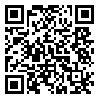Volume 18, Issue 3 (10-2019)
jhosp 2019, 18(3): 63-72 |
Back to browse issues page
Download citation:
BibTeX | RIS | EndNote | Medlars | ProCite | Reference Manager | RefWorks
Send citation to:



BibTeX | RIS | EndNote | Medlars | ProCite | Reference Manager | RefWorks
Send citation to:
Ghanavatinejad M, Tavakoli M, Sepehri M. A Clustering model for gadgets and apps used in patient monitoring in HIOT environment. jhosp 2019; 18 (3) :63-72
URL: http://jhosp.tums.ac.ir/article-1-5894-en.html
URL: http://jhosp.tums.ac.ir/article-1-5894-en.html
1- Master Industrial Engineering, Healthcare Systems, Faculty of Industrial and Systems Engineering, Tarbiat Modares University, Tehran, Iran
2- Professor, Healthcare System Engineering Group, Faculty of Industrial and Systems Engineering, Tarbiat Modares University, Tehran, Iran (*Corresponding Author), Email: mehdi.sepehri@gmail.com
2- Professor, Healthcare System Engineering Group, Faculty of Industrial and Systems Engineering, Tarbiat Modares University, Tehran, Iran (*Corresponding Author), Email: mehdi.sepehri@gmail.com
Abstract: (3534 Views)
Background: with increasing demand for treatment, patients are monitored with help of Internet of Things(IOT). Patient's monitoring devices and technologies include heart rate measurement, blood pressure measurement, blood glucose and other vital signs. The purpose of study is to provide a model of clustering patient physical monitoring gadgets and apps in Healthcare Internet of Things (HIOT) environment using data mining techniques, so based on the needs and characteristics of the user, the more appropriate results of choosing technologies acquired.
Materials and methods: This study is a review and functional since its result. The data includes 6 unique features of 60 selected technologies including function, price, connectivity route, power supply, location and type of use that has been extracted from R&D and advertising sites of technologies and also relevant articles. data analysis method is clustering technique and K-medoids algorithm. to identify the most effective features, random forest algorithm has been used.
Results: the proposed clustering model takes into account 6 as inputs and clusters gadgets and apps in accordance with selected characteristics as the model outputs. clustering problem data is clustered in 4 categories. Silhouette index is 0.45, which indicates the validity of the model. The type of application and then the price had the greatest impact on clustering.
Conclusion: By this model, patients or users can find the most appropriate technology based on the type of disease and other effective features, such as price. So with accurate physical and momentary monitoring, disease progression decrease and prevention of disease will improve.
Type of Study: Other |
Subject:
سایر
Received: 2017/10/25 | Accepted: 2019/03/13 | Published: 2019/05/13
Received: 2017/10/25 | Accepted: 2019/03/13 | Published: 2019/05/13
| Rights and permissions | |
 |
This work is licensed under a Creative Commons Attribution-NonCommercial 4.0 International License. |





